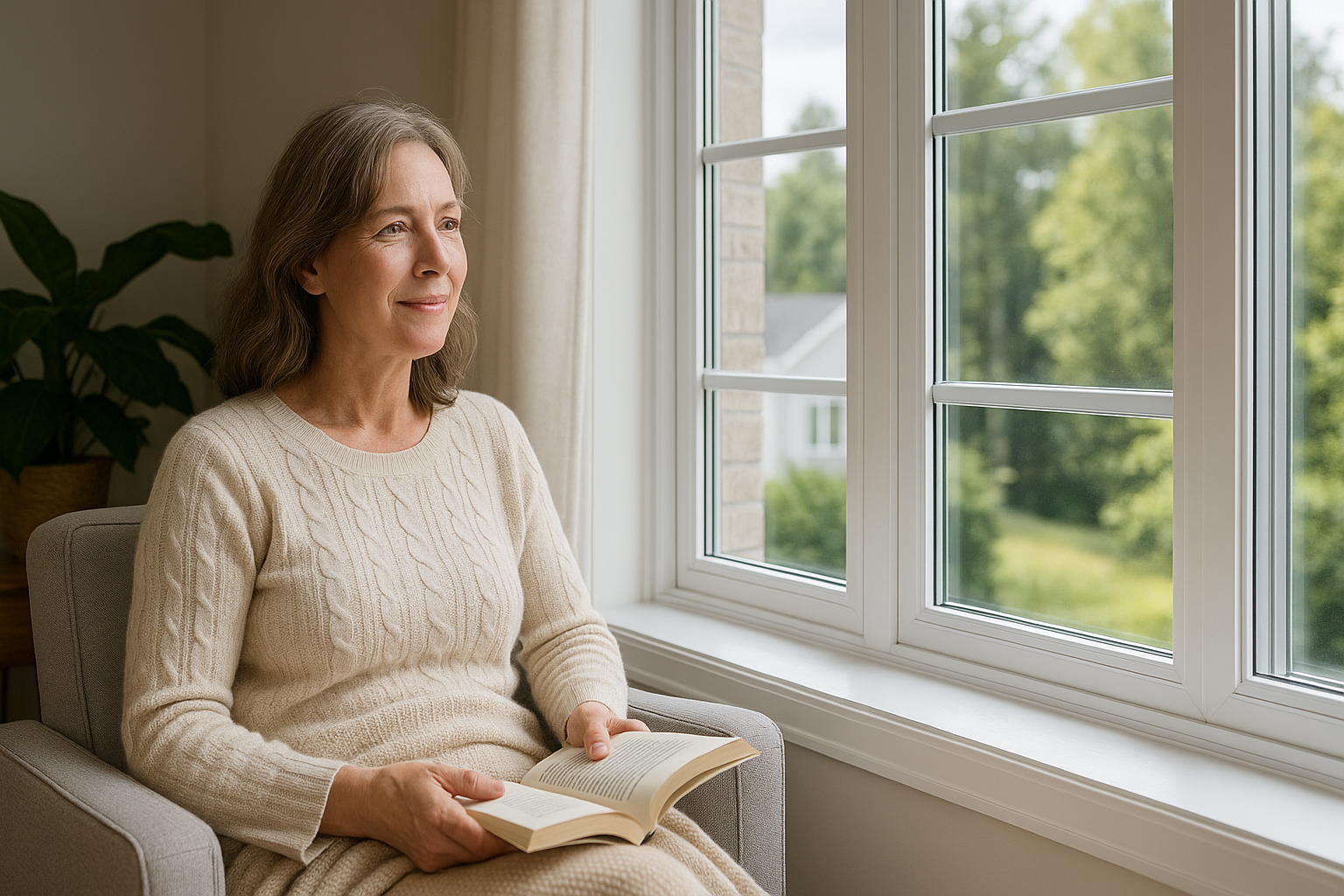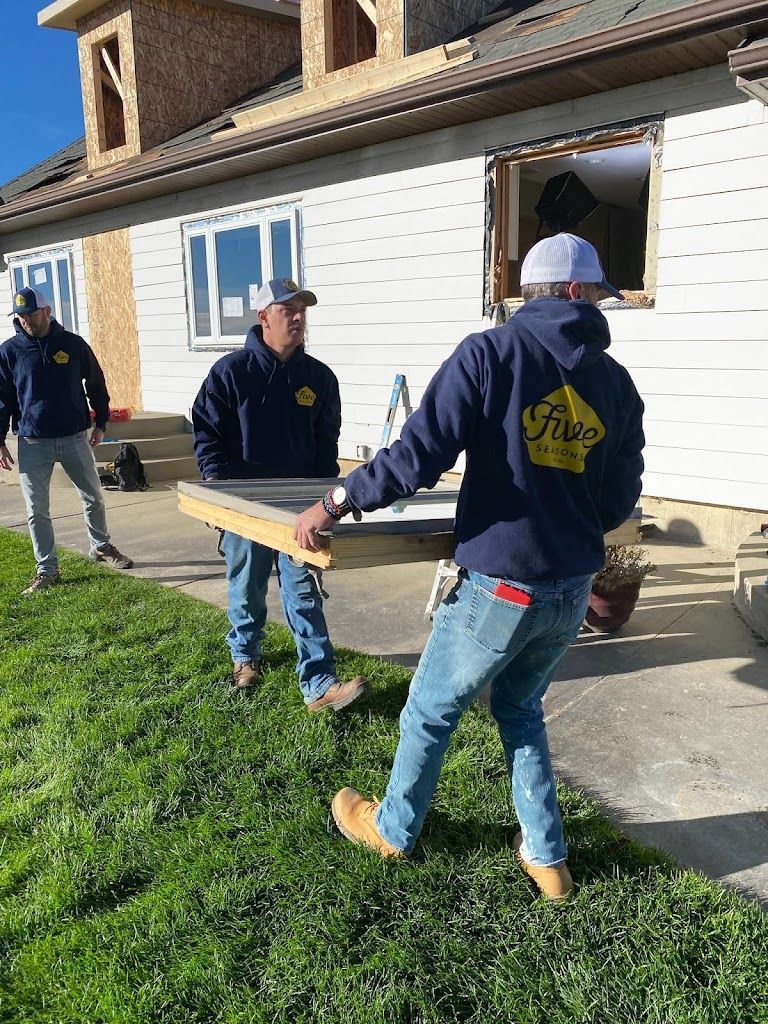Upgrading to double pane from single benefits include 20-30% reduction in heating and cooling costs through superior insulation, elimination of drafts and cold spots near windows, and significant improvement in home comfort with payback periods typically ranging from 5-8 years through energy savings alone.
According to ENERGY STAR, replacing single pane windows with double pane units can save homeowners $126-$465 annually per window in energy costs, with total project savings of $2,500-$9,300 for whole-house replacements, making this upgrade one of the most cost-effective home improvements available.
Single pane windows represent major energy loss points in homes, often accounting for 25-30% of heating and cooling costs through poor insulation and air leakage. Understanding the specific benefits and financial returns of upgrading to double pane windows helps homeowners make informed decisions about investments that enhance both comfort and long-term property value.
energy efficiency
Thermal Insulation Enhancement
Double pane windows provide dramatically superior thermal performance compared to single pane alternatives through the insulating air space between glass layers. This air gap creates a thermal barrier that reduces heat transfer by 50-70%, significantly improving home energy efficiency and comfort.
The insulating properties work year-round, keeping heated air inside during winter months and blocking unwanted heat gain during summer cooling seasons. This consistent thermal performance reduces HVAC system workload and creates more stable indoor temperatures throughout changing weather conditions.
Air Leakage Reduction and Draft Elimination
Modern double pane windows feature advanced weatherstripping and sealing systems that virtually eliminate air leakage compared to older single pane installations. This improved air sealing prevents drafts that make rooms uncomfortable and force heating and cooling systems to work harder.
The elimination of cold spots near windows creates more usable living space and improved comfort throughout the home. Rooms with upgraded double pane windows feel warmer in winter and cooler in summer, enhancing livability while reducing energy consumption.

Direct Cost Savings Analysis
Heating Season Energy Reductions
Homeowners upgrading from single to double pane windows typically see 25-35% reduction in heating costs due to improved insulation and reduced air leakage. For average homes, this translates to annual heating savings of $300-700, with exact amounts depending on climate, home size, and local energy prices.
The thermal performance improvements are particularly pronounced in cold climates where heating represents the largest energy expense. Double pane windows reduce heat loss through windows by up to 70%, making previously inefficient homes much more comfortable and affordable to heat.
Cooling Cost Benefits
Summer cooling savings from double pane window upgrades typically range from 15-25% as improved insulation reduces unwanted heat gain and eliminates hot spots near windows. Air conditioning systems operate more efficiently when windows provide consistent thermal barriers rather than heat entry points.
The elimination of solar heat gain through single pane windows reduces cooling loads significantly, particularly for homes with south and west-facing windows that receive intense afternoon sun. This cooling cost reduction compounds heating savings for substantial year-round energy cost reductions.
Comfort and Livability Enhancements
Temperature Consistency and Thermal Comfort
Double pane window upgrades eliminate the temperature variations near windows that make single pane installations uncomfortable. Rooms maintain more consistent temperatures throughout, reducing hot and cold zones that limit furniture placement and room usage.
The improved thermal performance creates more even heat distribution, allowing HVAC systems to maintain comfortable temperatures with less frequent cycling. This consistency enhances comfort while reducing equipment wear and extending system lifespan through reduced operational stress.
Noise Reduction and Acoustic Comfort
Double pane windows provide significant noise reduction compared to single pane alternatives, with the air space between glass layers creating an effective sound barrier. This acoustic improvement enhances comfort and privacy, particularly valuable for homes near busy streets or noisy neighborhoods.
The sound dampening effects improve sleep quality, reduce distractions during work-from-home activities, and create more peaceful indoor environments. This acoustic benefit adds substantial quality-of-life value that extends beyond direct energy savings.
Maintenance Requirements and Long-Term Care
Reduced Maintenance Compared to Single Pane
Double pane windows typically require less maintenance than single pane alternatives due to superior construction, better weatherstripping, and reduced exposure to thermal stress that causes seal failures and frame deterioration. Modern double pane windows feature durable materials and advanced sealing systems designed for minimal upkeep.
The improved thermal performance reduces expansion and contraction cycles that stress window components, extending the intervals between maintenance tasks and reducing overall care requirements. Quality double pane installations often require only annual cleaning and occasional hardware lubrication compared to frequent repairs needed for aging single pane windows.
Enhanced Durability and Service Life
Double pane window construction provides better protection against weather damage and thermal cycling that degrades single pane installations over time. The sealed design prevents moisture infiltration and reduces frame deterioration, extending service life while maintaining energy performance longer.
Modern weatherstripping and hardware systems in double pane windows resist wear better than single pane alternatives, reducing replacement frequency and maintenance costs. This improved durability translates to lower long-term ownership costs beyond the immediate energy savings from improved thermal performance.
Return on Investment Calculations
Payback Period Analysis
Most single-to-double pane window upgrades achieve payback through energy savings within 5-8 years, with exact timelines depending on local energy costs, climate conditions, and window quality. Premium installations may require 7-10 years for full cost recovery but provide superior comfort and longer service life.
Federal tax credits, utility rebates, and financing incentives can reduce effective project costs by 15-30%, accelerating payback periods and improving return on investment. These immediate cost offsets make window upgrades more affordable while enhancing long-term financial benefits.
Property Value Impact
Window upgrades typically increase home value by 70-85% of project costs, with double pane installations providing immediate equity enhancement alongside energy savings. Real estate professionals consistently identify energy-efficient windows as features that appeal to buyers and support premium pricing.
The combination of energy savings and property value increases often results in positive return on investment even for homeowners who sell before achieving full payback through energy savings. This dual benefit provides financial protection and flexibility for various homeownership timelines.
Installation Considerations and Optimization
Professional Installation Requirements
Double pane window performance depends heavily on proper installation techniques that ensure optimal thermal performance and longevity. Professional installation guarantees correct sizing, sealing, and integration with existing building envelope systems for maximum energy savings.
Experienced installers understand the specific requirements for achieving rated performance levels while maintaining warranty coverage. Quality installation prevents common problems like air leaks, moisture infiltration, and thermal bridging that can compromise energy savings and comfort benefits.
Timing and Project Planning
Strategic timing of window upgrade projects can maximize energy savings and minimize disruption. Fall installations prepare homes for heating season, while spring projects optimize cooling efficiency before summer heat arrives.
Whole-house window replacement projects provide the greatest energy savings and comfort improvements, though phased installations focusing on worst-performing windows can provide immediate benefits while spreading costs over time. Professional energy audits help prioritize replacement sequences for maximum impact.
For homeowners considering double pane upgrades, exploring advanced glass technologies can further enhance energy savings and comfort benefits. For comprehensive information about Low-E glass coatings and their additional performance advantages, explore our detailed guide: 🔗 Low E Glass Window Installation Benefits: Cost Savings & Home Comfort Guide

People Also Ask About Upgrading to Double Pane from Single Benefits
1. How much money can I save by upgrading from single to double pane windows?
Annual energy savings from upgrading single to double pane windows typically range from $200-600 per window, depending on climate, energy costs, and home size. For whole-house projects, total annual savings often reach $2,500-9,300, with cumulative savings over 15-20 years frequently exceeding initial project costs.
The exact savings depend on several factors including local energy prices, climate severity, existing window condition, and home insulation levels. Cold climates with high heating costs see the greatest benefits, while moderate climates still experience substantial savings through improved thermal performance.
Most homeowners recover upgrade costs through energy savings within 5-8 years, making window replacement one of the most cost-effective home improvements available. Federal tax credits and utility rebates can further accelerate payback periods and improve return on investment.
2. Will upgrading to double pane windows really improve home comfort?
Yes, upgrading to double pane windows dramatically improves home comfort by eliminating drafts, reducing temperature variations near windows, and creating more consistent indoor temperatures. Single pane windows often create cold spots in winter and hot zones in summer that make rooms uncomfortable regardless of thermostat settings.
Double pane windows also provide significant noise reduction, creating quieter, more peaceful indoor environments. This acoustic improvement enhances sleep quality, reduces outside distractions, and increases privacy - benefits that improve daily living quality beyond energy savings.
The elimination of condensation on interior glass surfaces during cold weather prevents moisture problems and improves air quality. These comfort improvements make homes more livable while reducing HVAC system workload and extending equipment life.
3. How long do double pane windows last compared to single pane?
Quality double pane windows typically last 20-30 years with proper maintenance, often outlasting single pane alternatives due to better construction and materials. The sealed design protects against weather damage while advanced weatherstripping maintains performance longer than basic single pane installations.
Single pane windows, particularly older installations, may require replacement every 15-20 years due to seal failures, frame deterioration, and declining energy performance. Double pane windows maintain their insulating properties and structural integrity longer, providing better long-term value.
The improved durability of double pane windows means fewer replacement cycles over a home's lifetime, reducing long-term costs while maintaining consistent energy performance. This longevity adds to the financial benefits beyond immediate energy savings.
4. Should I upgrade all windows at once or do it gradually?
Whole-house window replacement provides the greatest energy savings and comfort improvements while often qualifying for bulk pricing discounts and maximum rebate benefits. Complete upgrades eliminate thermal weak points and create consistent performance throughout the home.
However, phased replacement focusing on worst-performing windows can provide immediate benefits while spreading costs over time. Priority areas typically include north-facing windows in cold climates or south/west-facing windows in hot climates where energy loss is greatest.
Professional energy audits can identify which windows contribute most to energy loss, helping prioritize replacement sequences for maximum impact. This approach allows homeowners to see immediate benefits while planning future phases based on budget and energy savings results.
5. What factors affect the cost and savings of upgrading to double pane windows?
Window size, frame material, glazing options, and installation complexity significantly affect upgrade costs, with standard sizes costing less than custom dimensions. Premium materials like fiberglass or wood-clad frames cost more initially but often provide better long-term value through superior durability.
Climate conditions dramatically impact energy savings potential, with extreme climates offering greater savings opportunities that justify premium window investments. Local energy costs also affect payback calculations, with high utility rates accelerating cost recovery through energy savings.
Installation factors including home age, existing window condition, and structural modifications required can add to project costs. However, these same factors often indicate the greatest energy saving potential, making upgrades particularly valuable for homes with poor-performing existing windows.
Our Take
At Five Seasons Windows & Doors, we've helped thousands of Colorado homeowners upgrade from single to double pane windows and consistently see transformative results in both comfort and energy costs. The improvement is often more dramatic than homeowners expect, particularly for older homes where single pane windows represent major energy loss points.
Our experience shows that homeowners who upgrade from single pane windows report some of the highest satisfaction levels due to the immediate and noticeable improvements in comfort and energy bills. The difference in thermal performance is substantial enough that families often comment on how much more comfortable their homes feel within days of installation.
We believe upgrading from single to double pane windows represents one of the best home improvement investments available, providing measurable energy savings, enhanced comfort, and improved property value. The combination of immediate comfort benefits and long-term financial returns makes this upgrade particularly compelling for homeowners seeking both quality-of-life improvements and sound financial investments.
Final Takeaway
Upgrading to double pane from single pane windows provides compelling benefits including substantial energy cost reductions, dramatically improved home comfort, and strong return on investment through both energy savings and increased property value. The thermal performance improvements often exceed homeowner expectations, creating more livable spaces while reducing environmental impact.
The financial benefits become particularly attractive when considering federal tax credits, utility rebates, and long-term energy savings that often result in positive cash flow within 5-8 years. The combination of immediate comfort improvements and cumulative cost savings makes window upgrades excellent investments for most homeowners.
Understanding these comprehensive benefits helps homeowners make informed decisions about window investments that enhance both immediate living quality and long-term financial position. Professional installation ensures optimal performance and maximum return on investment for this proven and cost-effective home improvement.
Get Started Today
Five Seasons Windows & Doors is Colorado’s top-rated local window company with 230+ 5-star reviews. We offer expert advice, no-pressure quotes, and flexible project options — including phased installs. Schedule your consult today.



